OTDR is one of the most commonly used fiber optic measurement instruments and is widely used in the measurement, construction, maintenance and acceptance work of fiber optic cable projects. Although OTDR is widely used and is a common instrument for many installation and maintenance teams and engineering teams, but due to the OTDR curve expression is not intuitive enough, there are still many practitioners will not see the curve, the following are several OTDR common curve analysis, can let you quickly start, read OTDR.
01 Normal Curve
The normal curve is relatively smooth except for the head and tail ends, and these curves are fine. If there are event points such as fusion points, flanges, bends and so on, it may be that the event point loss is too small or flooded in the head-end blind zone. Our default attenuation standard for 1550nm wavelength is 0.2dB/km, and the attenuation standard for 1310 is 0.35dB/km, which is also a major factor in determining the slope of our conventional curve.
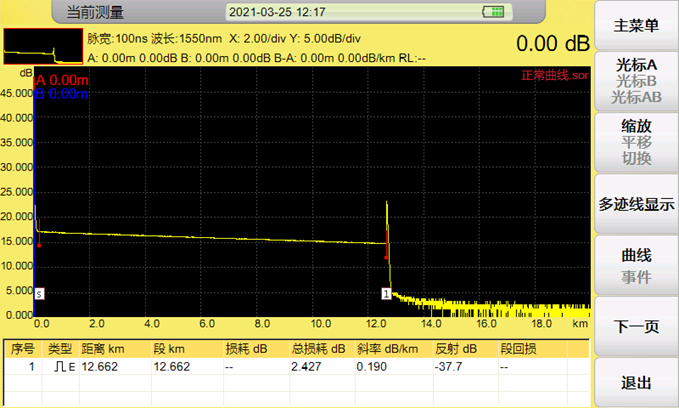
02 Broken Fiber
Broken fiber is a very serious line fault. Generally speaking, a complete fiber optic connector will form a reflection peak due to Fresnel reflection. If the end face is broken, then generally speaking the end face is necessarily uneven, such as rat bites, accidental pinching or the like, the resulting end face is uneven, which also results in the inability to form a reflection peak due to Fresnel reflection, which is expressed as a fallen curve, but there are also cases of people cut off with a cutting knife, in this case there is a reflection peak, the specific situation is analyzed.
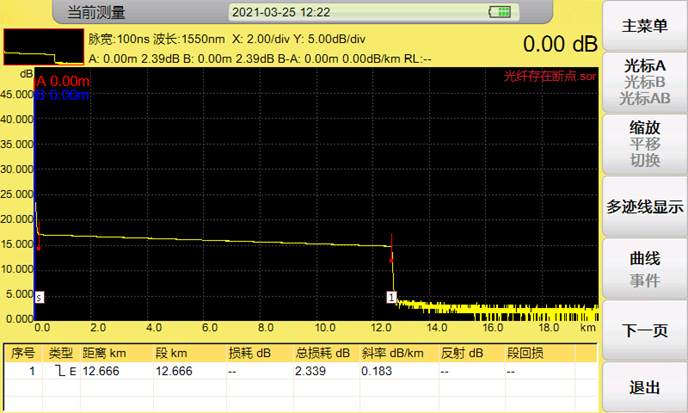
03 The range is not suitable
If we do not use automatic mode, then we need to manually select the range, but we do not know the length of the fiber, inevitably choose a large or small, so the test waveform curve crowded together or the entire screen is the curve of the situation, because the test range is generally recommended for the actual length of about 1.5 to 2 times, so it is recommended to use the automatic test to see the approximate length of the line, and then manually select more appropriate range.
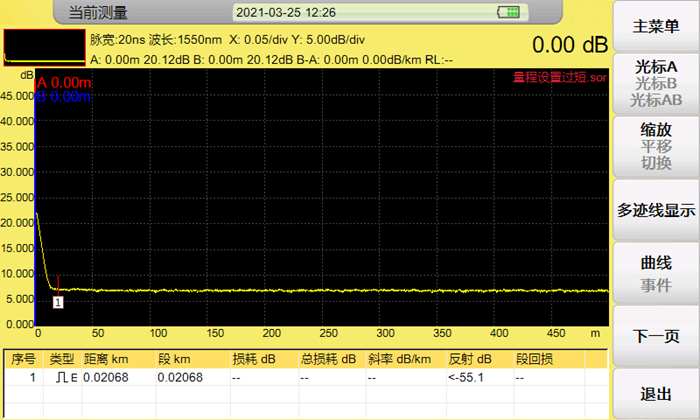
Selection range is too small
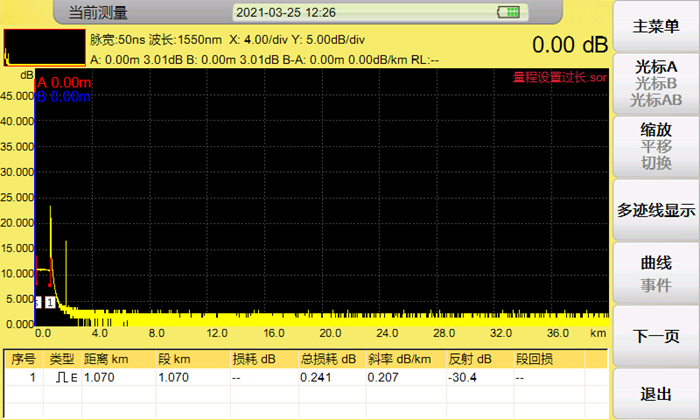
Selection of range is too large
04 Poor contact
Poor contact refers to the optical signal transmission between the optical fiber and the optical fiber is not smooth, may be flange is not connected or the end face of the fiber connector is dirty caused by the head end contact problem for: the beginning section of the fiber has a downward arc, the middle flange contact problem is manifested as: the middle section of the fiber has a downward arc, which is a necessary to eliminate the fault, otherwise the arc falls into the noise, it is difficult to analyze the curve.
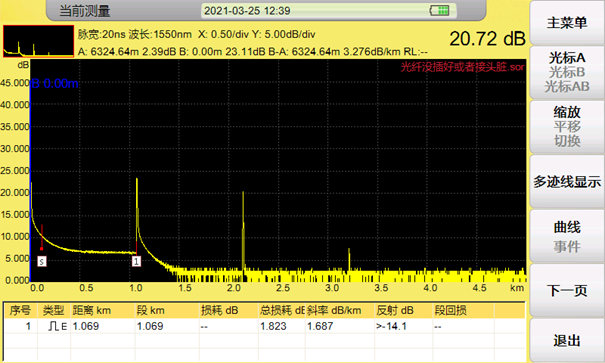
Poor fiber contact
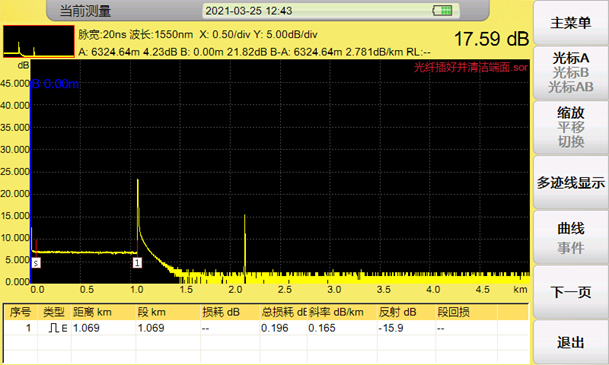
Good fiber contact
05 dynamic too small
The following curve is the use of small dynamic OTDR test images of long distance fiber, simply can not see the end, so we choose OTDR test must pay attention to good dynamic, dynamic and maximum range is closely related, if at this time has chosen the maximum pulse width of OTDR, maximum range but still dynamic enough, then it is recommended to replace a greater dynamic OTDR.
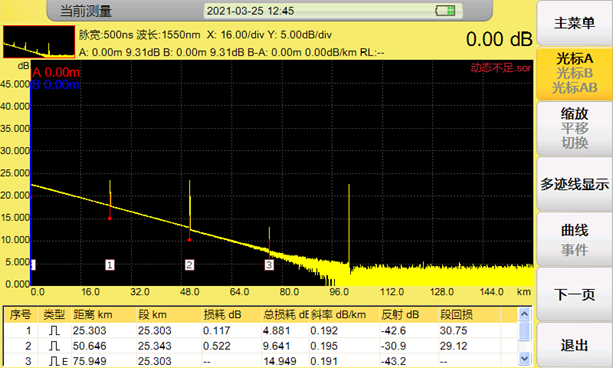
These are some of the test curves we may encounter when conducting OTDR tests. At this stage, there are many photo-eye or photo-eye variants that can help us skip the curve to identify the fiber, but the curve is still the most authoritative way to analyze OTDR test results. The analysis of fiber optic cable curves, as communication people, we are also recommended to need to be aware of.